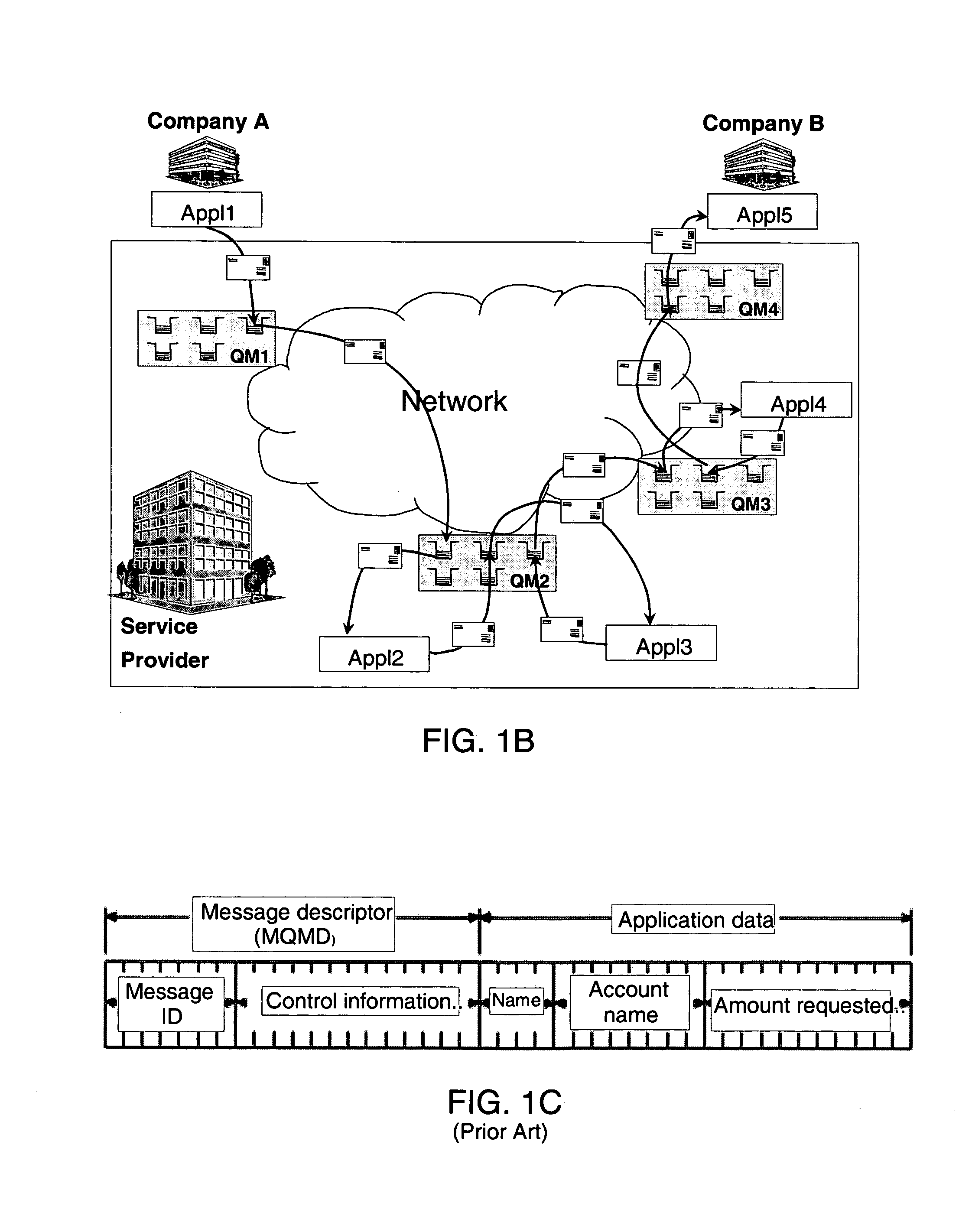System, method and computer program product for dynamically changing message priority or message sequence number in a message queuing system based on processing conditions
a message queuing system and message sequence technology, applied in the field of message queuing, can solve the problems of static priority of a message, application may not know the correct priority of the message, and the number and the size of the message can vary,
- Summary
- Abstract
- Description
- Claims
- Application Information
AI Technical Summary
Benefits of technology
Problems solved by technology
Method used
Image
Examples
Embodiment Construction
[0025]FIG. 1A shows two prior art message queuing systems within a messaging network 2. An application 6 generates messages and sends them to one of the message queuing systems. Each message queuing system includes at least a queue manager 10, queues 22, and communication links 30 to other message queuing systems. A queue 22 is a data structure used to store messages until they are retrieved by an application. Queues 22 are managed by the queue manager 10. The queue manager 10 is responsible for maintaining the queues 22 it owns, for storing all the messages it receives from application programs or other queue managers in the appropriate queues, and for retrieving the messages in response to application requests.
[0026] Queues 22 exist independently of the applications that use them. A queue can exist in main storage if it is temporary, on disk or similar auxiliary storage if it must be kept in case of recovery, or in both places if it is currently being used and must also be kept f...
PUM
 Login to View More
Login to View More Abstract
Description
Claims
Application Information
 Login to View More
Login to View More - R&D
- Intellectual Property
- Life Sciences
- Materials
- Tech Scout
- Unparalleled Data Quality
- Higher Quality Content
- 60% Fewer Hallucinations
Browse by: Latest US Patents, China's latest patents, Technical Efficacy Thesaurus, Application Domain, Technology Topic, Popular Technical Reports.
© 2025 PatSnap. All rights reserved.Legal|Privacy policy|Modern Slavery Act Transparency Statement|Sitemap|About US| Contact US: help@patsnap.com



